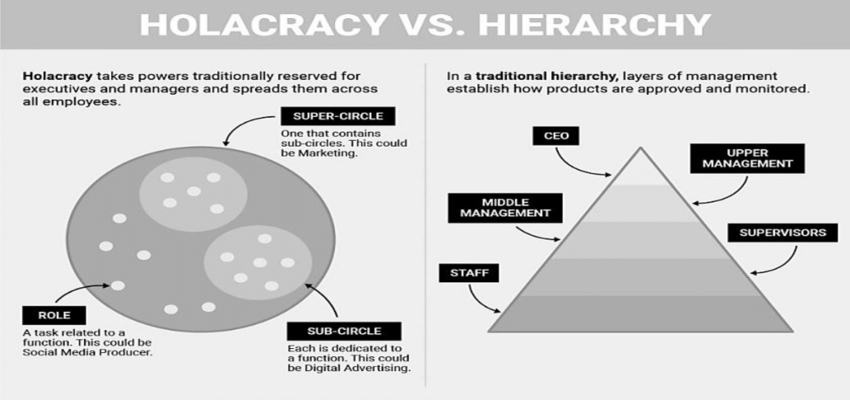Introduction
Hiring and retaining employees is challenging. It takes one to three months, sometimes more, to find the right people. You can factor in an additional training period for operational roles. And these efforts double when you need to replace an employee.
According to McKinsey, companies lose between $228 and $355 million annually in the US due to high turnover. This stems from a lack of compensation, workplace flexibility, and poor work community, among other factors.
Fortunately, you can avoid this by establishing solid internal branding. The fastest path to a resilient culture is: audits, culture code, playbooks, and training tailored to your organization. Let's explore the importance of having an effective internal brand to your reputation in the outside world and the best practices and strategies you can implement.
What is Internal Branding?
Internal branding is building your brand's reputation and culture from the inside.
When everyone shares the brand values, mission, and vision, you can expect consistency in communicating and implementing strategies. In effect, you have a team that embodies your brand, ensuring consistency, authenticity, and loyalty.
Benefits of Internal Branding
Traditionally, businesses rely on HR and department heads to build a team that fits their needs, overlooking the significance of an internal brand in creating a sustainable company culture. This is often due to a poor understanding of how internal and external brands affect each other.
So, what can establishing an internal brand do for your business?
Provides Better Employee Engagement
Having effective internal branding means creating a team that melds harmoniously with each other. But, achieving this goes beyond hiring top talent with the right technical skills.
Gallup reports that employees actively engaged at work are more likely to be productive, increasing profits. They are also more resilient, a vital quality in a volatile era filled with economic challenges. Engagement is as critical as having the necessary hard skills.
Through internal branding, you can collaborate closely with your managers and HR team to ensure you are onboarding on-brand employees. In exchange, companies can focus on enriching employee experience through workplace environment and well-being initiatives.
Builds a Strong Company Culture
When employees genuinely understand your brand values, you ensure a tight-knit community of like-minded people. Effective internal branding encourages camaraderie and creativity, producing unique and innovative products and services.
The quality of your company culture affects your customers, too! Employees in a happy workplace are more likely to deliver a better customer experience. It also drives loyalty, which lowers your employee churn rate.
Helps Maintain Consistency
Effectively delivering the brand message and identity depends on more than just your branding and marketing team; it also depends on your employees.
Establishing internal branding involves educating your team about who you are and what the brand stands for. It entails orienting about the brand guidelines, a rulebook that details the do's and do n'ts of using assets, and other branding elements.
Internal branding also helps define the brand identity, which ensures consistency inside and out. Consequently, it increases brand recognition and recall.
Nine Internal Branding Strategies to Consider
Internal branding may look different from business to business, as several factors are at play. But fret not—we gathered tried-and-tested strategies from branding experts to give you some leverage.
1. Align Company Vision and Values
Defining what the brand stands for and aligning it with its values can motivate employees to work together. This alignment boosts confidence in your brand's leadership and keeps employees engaged.
So, start by leading by example. A top-down approach where leaders take the initiative to demonstrate the brand values in every decision and action makes it easier to integrate alignment.
2. Identify and Leverage Effective Communication Channels
Communicating within your company has always been challenging. With a few taps, you can automate emails and schedule tasks for seamless operation. But, juggling multiple digital tools can be overwhelming for employees.
Stick to essential communication channels to avoid confusion and to ensure employees receive company updates. Personalizing content and tools relevant to your employee demographic also helps.
For instance, younger employees prioritize flexibility and prefer working on multiple devices. That said, go for apps that have desktop and mobile versions. To avoid clutter, you can also segment content and information according to their level of importance.
Finally, establish a feedback loop within your internal communications system to ensure channels remain suitable to your team's needs. When there is trust and support from management, employees are more likely to voice ideas and concerns.
3. Integrate Employee Training and Development
Introduce training and development programs to enhance and expand your employees' skills. This will enrich their experience in the company and demonstrate how committed the brand is to furthering their career growth. Some examples include reskilling and upskilling opportunities, workshops, and leadership coaching.
4. Introduce Recognition and Rewards Programs
Recognizing and rewarding the efforts of outstanding employees can sometimes be more motivating and morale-boosting than salaries and other cash bonuses. It could be as simple as giving thanks, or you can go the extra mile by awarding certificates like Employee of the Month, other benefits, and well-deserved promotions to show appreciation.
Work with your HR team and managers to choose the best methods for recognizing and rewarding employees. You can also involve the latter and ask for feedback to personalize their rewards. Avoid corporate politics, be transparent when implementing these programs, and don't forget to measure results.
5. Internal Branding Ambassadors
Employee brand ambassadors are individuals who advocate for your brand within the company. Think of them as influencers who spread awareness and help strengthen the company culture. They communicate information others need to know about your company and bridge employees to your brand by making them feel welcomed and supported.
On social media, you'll find employee ambassadors posting office GRWM (Get Ready With Me) and Meet the Team content, peering at what it's like inside the company. These can be great external marketing efforts that attract potential customers and employees who may come across their content. They're also an excellent source of business referrals.

NW Alberta Foundation introduces its team via TikTok
Brand ambassadors humanize your brand! Because of their effectiveness, some companies encourage and reward them through employee ambassador programs.
6. Utilize Internal Branding Tools
Leverage internal branding tools like surveys, communication tools, rewards and benefits programs, and brand orientations. By doing so, employees are educated and aligned with what matters most to the brand. It also nurtures them to reach their full potential within the company.
7. Create a Collaborative Environment
The strength of your internal branding hinges on having a collaborative work environment.
Consider creating spaces that encourage open communication and creativity. Work with your department heads and colleagues to develop a support system that recognizes and addresses issues early on. Integrate healthy relationship practices that prioritize openness, safety, and the well-being of your employees.
8. Foster Inclusivity and Diversity
Diversity and inclusivity are not just trends for companies wanting to build a positive image. People from different backgrounds bring innovative ideas to the table, and their diverse perspectives make them more likely to think outside the box.
In addition, it strengthens a brand's reputation when customers see inclusivity. It also allows customers to connect with the brand easily as they see a representation of themselves among brand employees.
Fostering diversity and inclusivity also increases employee retention rates. According to a study by Deloitte UK, employees in diverse workplaces, reported better productivity and a 19 percent increase in revenue.
9. Monitor and Measure Success
This strategy is obvious, but many companies fail to implement it. A survey from tech company D2L reveals that while many have integrated employee training, only 33 percent of participating businesses monitor and measure its impact.
That said, periodically identify metrics that best assess your internal branding efforts. Failure to measure the success of internal branding strategies leads to wasted resources and growth opportunities.
This includes but is not limited to employee churn rate, employee satisfaction surveys, and performance reviews. You can also gauge internal branding alignment through what customers say about your people.
Case Studies: Successful Internal Branding Examples
When brands invest in their people, create collaborative and healthy work environments, and align all communications, goals, and values, they can expect consistent internal branding. Just look at Google and Zappos, two companies known for their successful internal branding.
Google: Doing Serious Work in a Casual Environment
Google has disrupted the traditional workplace with its internal branding strategies. Before it became a trend, Google had already introduced innovative workplaces many employees covet.
Google believes serious work can also be done in a casual environment, which is evident across its offices worldwide. Zurich has a silver slide, London has dance studios and a gym, and Dublin has wellness facilities.

Google Zurich office is equipped with a slide and quirky lounge areas. Image via World Economic Forum

Google’s Dublin office comes with an entertainment room where employees can sing and dance their hearts out. Image via Office Inspiration
They also offer free haircuts, food, health checkups, the infamous nap pods, and massages. These are perks meant to encourage employees to play, have fun, and care for their well-being.
But, their internal brand efforts continue.
Google spearheads initiatives that let employees connect worldwide. One such initiative is the Googler to Googler (G2G) program, which encourages employees to share their skills and knowledge to inspire others. Employees can also attend orientations, workshops, and other continuing education opportunities to further their skills.
Finally, data is crucial to the brand's strategies. Google collects and analyzes information and feedback from various channels to create and implement plans that ensure diversity and inclusivity. The brand has set a high standard, ensuring every hire has attributes aligned with Google.
Zappos: Dismantling Hierarchy in the Office
Zappos is guided by its core purpose of "delivering happiness." To do so, the brand understands that the work needs to begin from within. The brand introduced holacracy, a management style that follows the philosophy of decentralized organization.
At Zappos, there are no managers and no bosses. Teams are afforded as much autonomy as needed to do their jobs efficiently. This promotes accountability and removes bureaucracy, which significantly increases productivity.

Holacracy challenges the traditional organizational hierarchy with its holistic approach to leadership. Illustration via Research Gate
But, the process took work, especially in its initial stage. With most people conditioned to the traditional hierarchy in the office, the brand developed training and education programs to help employees understand the reason behind holacracy and its benefits.
Such an approach pushed employees to "self-manage" by having the initiative to develop innovative solutions to challenging problems. It made the brand agile in addressing concerns as market demands evolved.
The brand also restructured its internal communication system to be straightforward and focus only on essential matters. Other growth initiatives, like culture-building activities, were made available.
Zappos' strong company culture has done well for the brand, demonstrating customer service that goes above and beyond. For example, they quickly respond to customer complaints and take the time (sometimes hours) to talk to them until matters are settled. They offer free shipping and returns so customers can try products and keep only what they want.
Zappos founder Tony Hsieh shares in an interview, "One of the learnings we’ve had about self-organization and self-management is that it’s not just a systems change; it’s also a personal journey for each employee. Self-organization and self-management are about the entrepreneurial mindset."
Common Challenges and Solutions in Internal Branding
Fixed Mindset Leading to Resistance
Introducing new practices and ideas is often difficult when people have their traditional ways ingrained in their minds. But, this limiting approach could be detrimental to the success of internal branding.
So, find people who resonate with your brand from the start and possess a growth mindset. Make it a point to iterate processes for continuous improvement and model openness to learning and embracing challenges.
Internal Miscommunication
Many factors cause miscommunication in internal branding. These could include information overload, poor coordination between departments, and inconsistent messages.
To address this: 1. Hold regular meetings to highlight critical updates and concerns employees know. 2. Refine your digital communication system by removing unnecessary tools that contribute to the clutter. 3. Double down on efforts that foster cross-departmental dialogues and collaboration.
Unlock the Power of Internal Branding
Internal branding is just as critical as external branding. Without a strong emotional connection between employees and the brand, executing plans effectively and achieving goals is challenging. The sooner business leaders understand this, the easier it is to maintain cohesive branding across all channels.
Ready to transform your company culture through a robust internal brand? Partner with a professional branding company to help you achieve long-term success!
Oct 1, 2024
